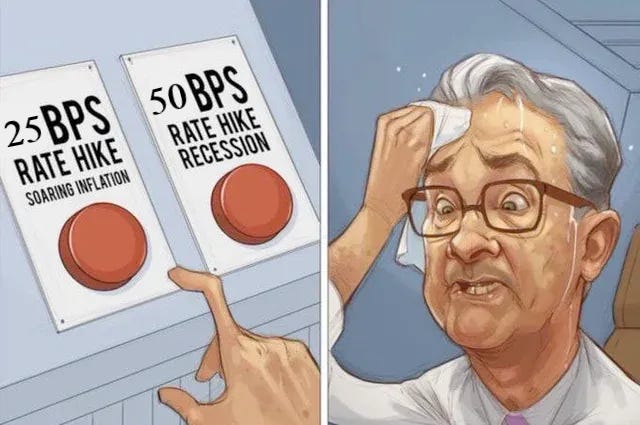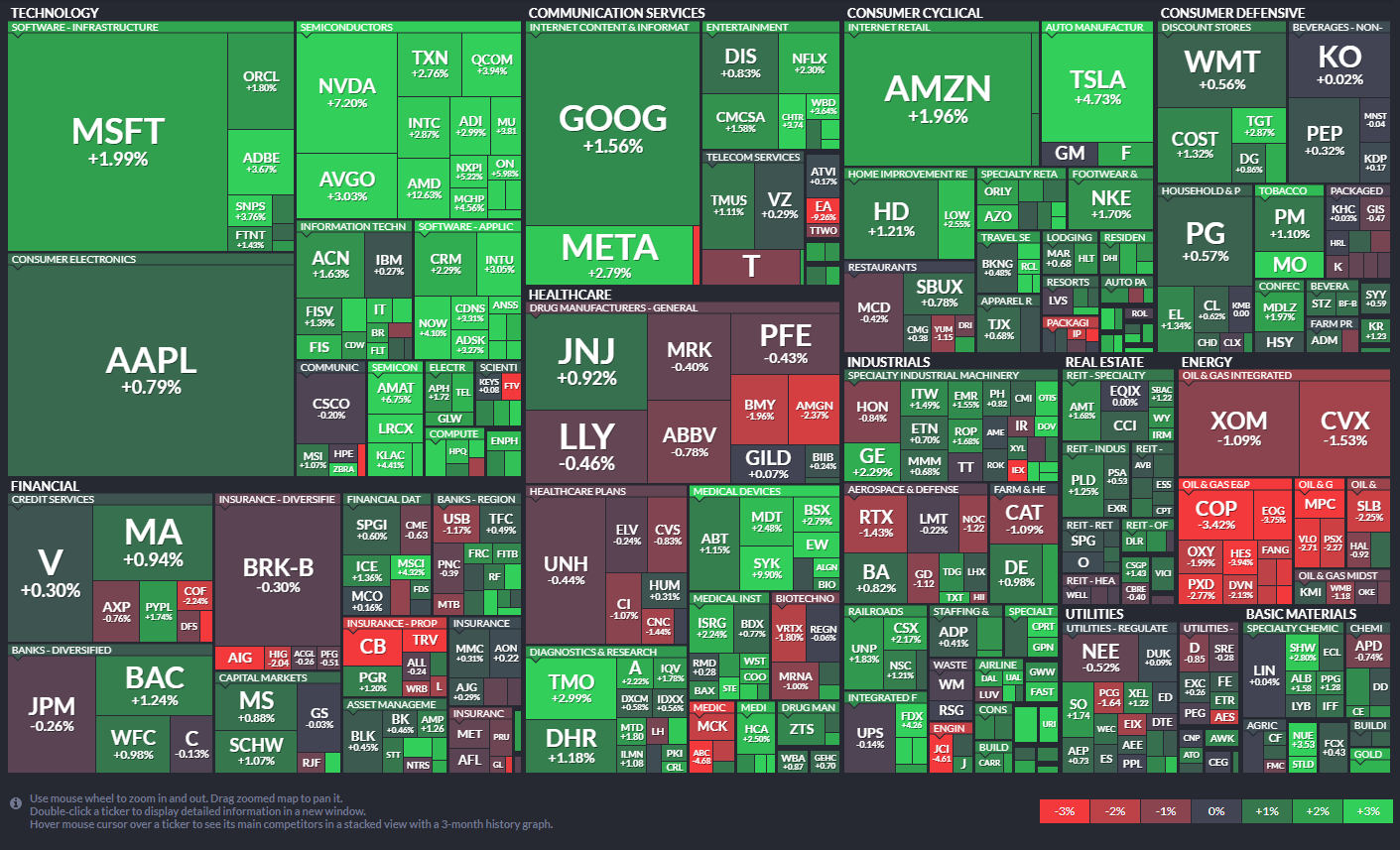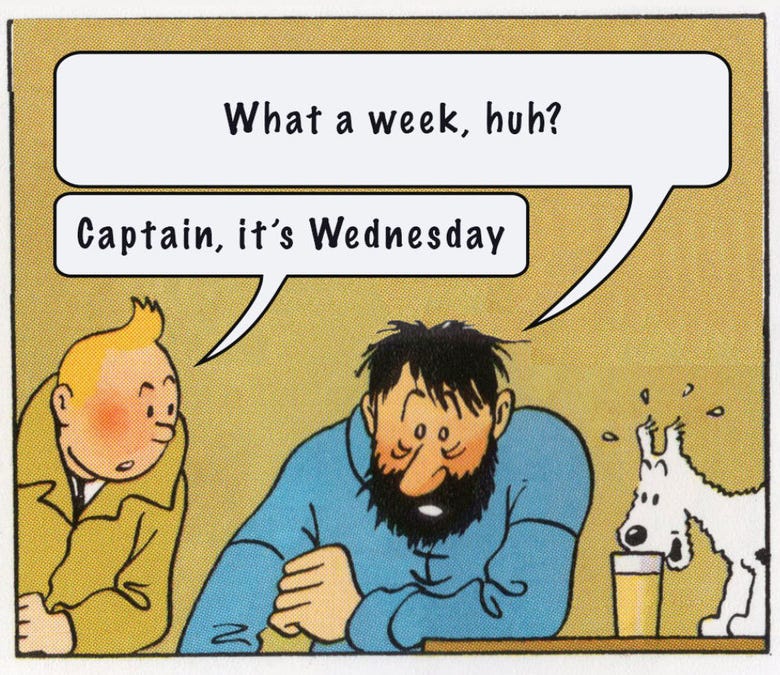The Federal Open Market Committee decided to raise their target range for the Fed Funds Rate by a quarter point today. That puts the range in the 4.5%-4.75% range. The FOMC statement was very short of details, however it did reveal that this was a unanimous decision.
To say that this was disappointing, for me, is an understatement. I’m not entirely shocked that Powell went with a 25 basis point increase as that was being telegraphed by the FedWatch tool as well as a few Fed speakers prior to the meeting. It certainly was not disappointing for the markets.
The Nasdaq gained 2% in short order. We also saw a big gain in gold, silver, and the Euro. Where we did not see a bounce was in oil.
Due to the short nature of the FOMC statement, the press conference was going to be most interesting to me. While there were the typical bonehead questions (looking at your WaPo and NYTimes), there were a couple that were very put. Specifically Nick Timiraos asked about the possibility of a wait-and-see approach and he tried to get a sneak preview of what the meeting minutes might show. Powell was adamant that data will dictate policy. He also told Nick that those minutes will be out in 3 weeks’ time.

Steve Liesman also asked a long question but an important one. It was about inflation versus the Fed Funds Rate and if the committee felt that they had achieved their goal.
My view on the FFR vs the inflation rate had been heavily influenced by Robert Wenzel’s thoughts on the subject. Robert was of the mind that the FFR needed to be above the inflation rate to arrest inflation. While I was of this mind for many years, as I look more at the inflation statistics, my understanding has changed. One of the factors that changed it was that the government continues to manipulate the CPI data. In their manipulations, it never adjust the CPI higher. They are continuing to manipulate this data to this day.
This has made me question whether the FFR must be higher than the CPI to control inflation. I am now reverting back to a Milton Friedman/Rothbardian stance in that inflation is an increase in the money supply and when the money supply stops increasing, inflation stops increasing. Also, increases in the money supply do not necessarily mean an increase in prices. Both the supply and demand of money need to be taken into account to determine whether an increase in prices would be observed. I acknowledge that the FFR has a heavy influence on demand. Therefore it is part of the equation but it is not the be-all-end-all of that equation.
We have seen the money supply stay flat for a record 15 months. In addition, interest rates are beginning to slow demand. Even Powell admitted this during the post-meeting press conference saying that, “we can now say for the first time that the dis-inflationary process has started”. This has been reflected in my favorite inflation tracker, the Case-Shiller home price index.
We’ve witnessed a rather steep decrease in the inflation rate for home prices. If the rate of decrease continues at this pace, we could see a 0% year-over-year increase by March or April. Keep in mind, your local market may vary. I saw several hot takes yesterday showing that San Francisco home prices year-over-year were already negative. However, I didn’t see anyone mention that Miami is still 18%+.
Looking forward for the Fed, the CME FedWatch tool has penciled in another 25 basis point increase (at 84% probability) for the March meeting. The tool then shows that the target rate will have the highest probability of staying at 475-500 until November 2023 when it projects a cut to 450-475 (35.2% probability). It is hard to gauge these kinds of thing that far out but I do believe that the Fed is prepared to take a wait-and-see approach (which was hinted at the presser by fed-whisperer Nick Timiraos). The March meeting will also see a economic projections from the Fed.


On the labor front, JOLTs showed that Job Openings continued to stay robust. 11.0 million openings were recorded in December of 2022. It is the most in 5 months and well above the market expectations. The largest increases were seen in accommodation & food services, retail trade, and construction. Quits also continue to stay elevated. There is still a big mismatch in the labor force. There is less demand for tech/information workers and a high demand for service and construction. I’ve seen countless stories about tech sector layoffs (today alone saw Rivian, DraftKings, and Paypal all make announcements) as well as pay cuts (the latest being Intel).









Disappointing indeed. I've already seen a lot of permabulls claim they are done raising when clearly they are not. Guess the markets are going to rip up to close the gaps above now before stalling again. Either way Powell got ahead of the other CB's and they will not be able to catch up. I worry more about an inflation relapse now, and gold echoed that concern today.
I got a reply from Dr. Mark Thornton on FRR/CPI a few months ago (https://twitter.com/DrMarkThornton/status/1572242472532676611). He was dismissive of the question. I think that is fair - implying you can't know: price controls don't work. We can probably correlate FRR exceeding CPI as a good idea but there are too many factors to ever simplify a solution to just that.